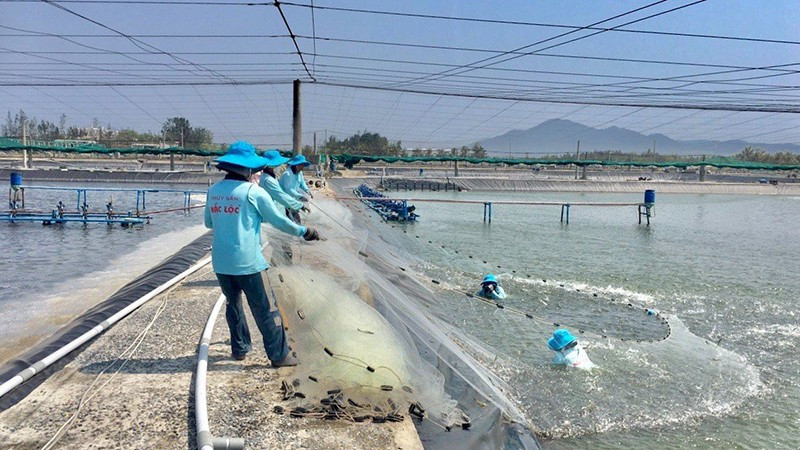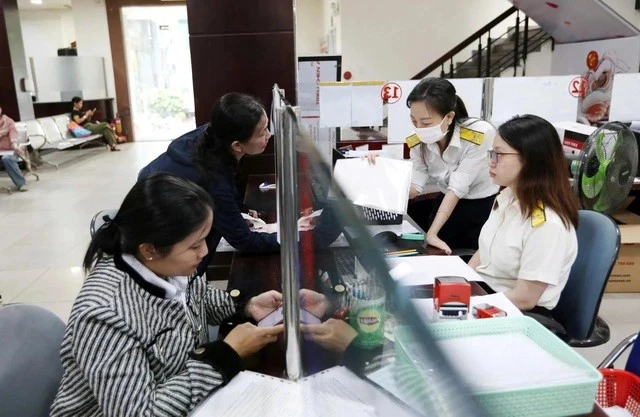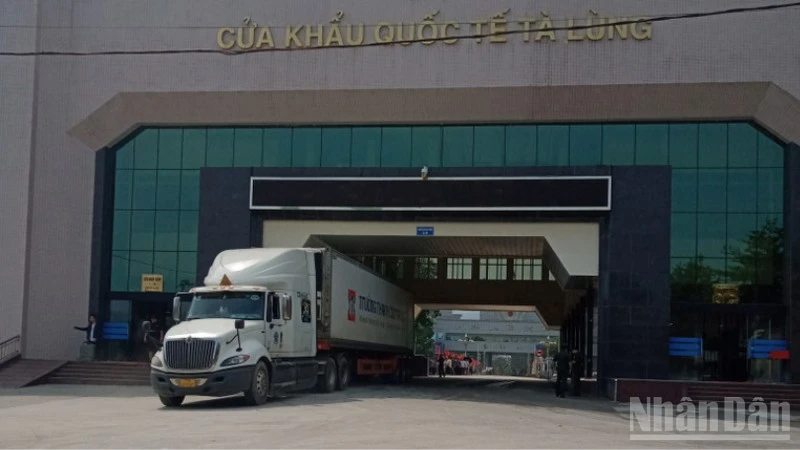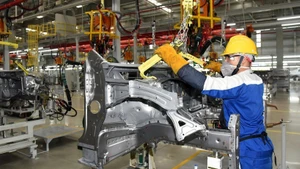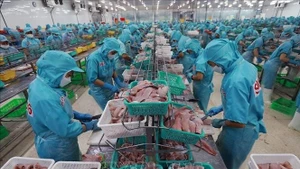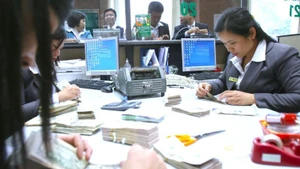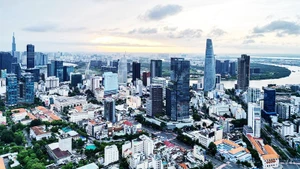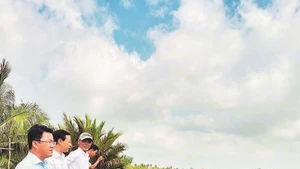The reason is that the seafood industry has been continuing to face a series of problems, including the impact of the Russia-Ukraine conflict and the COVID-19 pandemic, increasing inflation, large inventories in many countries around the world, especially countries and regions that are the main export markets of Vietnam's seafood products such as the US, EU and Japan.
The world market has been witnessing fierce competition on price and supply as the seafood industry of countries such as Ecuador and India, etc., have been recovering strongly after the pandemic. Domestically, fishermen and seafood enterprises also face many difficulties due to rising production costs, falling selling prices, slow consumption, increasing inventories, running out of capital and difficulty in accessing loans to maintain production and exports.
Output increases, turnover decreases
Ca Mau is home to the largest aquaculture area in the country with more than 300,000 hectares, including more than 270,000 hectares of shrimp farming. The total aquaculture production of Ca Mau reached more than 204,000 tonnes in the first six months of this year, an increase of 4.4% over the same period in 2022. Despite the increase in output, the total seafood export turnover of Ca Mau only reached 502 million USD in the first six months, down 13.4% compared to the same period in 2022. Ca Mau seafood exports decreased in most major markets such as the US, EU, Japan and Australia.
According to Deputy Director of the Ca Mau Provincial Department of Industry and Trade Duong Vu Nam, shrimp exports were low in the first months of 2023 due to recession and high inflation in major economies, which made consumers tighten spending, leading to a decrease in consumption.
That is also the reason why the inventory of seafood products in Ca Mau in the first months of the year sometimes reached more than 24,000 tonnes. The output level for exports is difficult, leading to a continuous decrease in the price of raw shrimp, including black tiger shrimp and vannamei shrimp, at 15,000 - 45,000 VND per kilogramme.
Similarly, seafood business and production enterprises in Phu Yen Province faced many difficulties with seafood exports decreasing by 35% in the first six months of 2023. As a result, the situation of seafood production and business in the locality has been also affected.
Facing these difficulties, the Vietnam Association of Seafood Exporters and Producers (VASEP) in mid-June compiled reports and proposed many solutions to remove difficulties for the seafood industry such as adjusting USD lending interest rates below 4% and VND lending rates below 7% to support export enterprises, attention and consideration from the State Bank of Vietnam (SBV) for a stimulus package of 10 trillion VND for aquaculture in the Mekong Delta Region, and a stimulus package for export enterprises to buy raw material reserves from now on for exports within the next 3-6 months in 2023 and the first quarter of 2024. The association also proposed the Ministry of Finance direct the acceleration of the refund of value-added tax on exported goods and services; the extension of the validity period of policies on the exemption, reduction, extension of tax and land rent payments; and the exemption and reduction of fees and charges until the end of 2023.
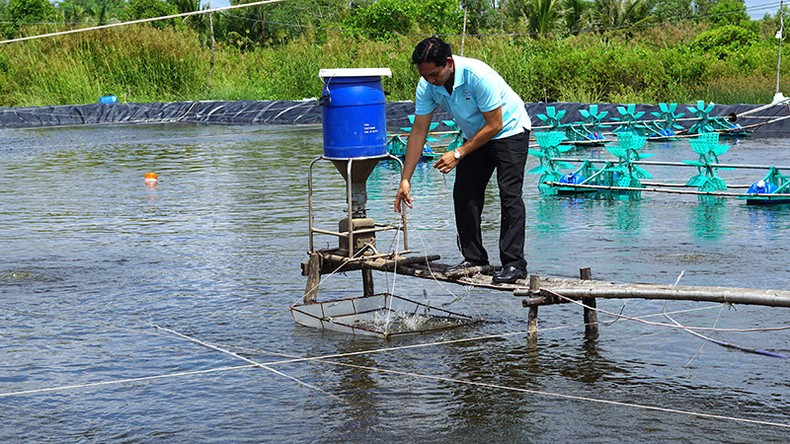 |
| Farmers in Tan Hung Commune (Cai Nuoc District, Ca Mau Province) visit a super-intensive shrimp pond that has just released a new crop. |
Assertiveness by localities
Besides VASEP, localities with strong development of their marine economy have taken timely drastic measures to remove difficulties for seafood production, processing and exports businesses and facilities. Chairman of the Phu Yen Provincial People’s Committee Ta Anh Tuan said the province has been consolidating a working group on removing difficulties and obstacles for enterprises, investors and projects in the province, towards implementing the goals and targets of socio-economic development.
In particular, the Provincial People's Committee requested the Provincial Tax Department promptly carry out policies on the exemption and reduction of taxes, fees and charges and extend the time limit for paying taxes and land rents for manufacturing and exporting enterprises as well as coordinating with departments, agencies and sectors to promptly solve problems in policy implementation to achieve high efficiency while implementing the recommendations of the manufacturing and exporting enterprises in the locality.
In Ca Mau, a number of symposiums were held to find ways to remove difficulties for shrimp exports. Accordingly, many organisations and businesses pointed out the reasons for the decline in seafood exports, and proposed solutions to remove these difficulties and enhance competitiveness so that Vietnamese shrimp can compete with the low-priced export shrimp of some large shrimp farming countries such as Ecuador, India, etc.
According to a representative from the Ca Mau Seafood Processing and Services Joint Stock Company (CASES), shrimp prices are decided by the import market. Therefore, to compete with countries with large export reserves but low prices, Ca Mau shrimp in particular and Vietnamese shrimp in general must find ways to lower costs and increase production.
According to the Vice Chairman of the Ca Mau Provincial People's Committee Le Van Su, the disadvantages and challenges posed in the shrimp production chain in Ca Mau require the harmonious and close coordination of the State, farmers, scientists and businesses to maintain the production, processing and export activities in the spirit of not letting the production chain be broken.
From the perspective of the government, the provincial leaders directed the functional sectors to strengthen the strict management of purchasing and businesses agents to avoid a situation of lowering the purchase prices of raw shrimp from farmers.
The seafood enterprises themselves also must have flexible solutions to "save themselves" and then to restore their inherent production and business performance.
According to General Director of the Minh Phu Fisheries Group Joint Stock Company Le Van Quang, the cost of shrimp farming currently depends mainly on input materials (feed, aquatic drugs and microorganisms) imported by FDI enterprises. Therefore, it is very difficult to intervene in supply prices.
Accordingly, one possible solution is to reduce the intermediaries in the distribution of "inputs" and provide more preferential support from banks. In addition, the State needs to have specific mechanisms and policies for shrimp, especially credit packages, to support both farmers and exporters. Once they have access to low-interest support packages, businesses and cooperatives will have more resources to expand production and develop faster towards leading the product chain.
